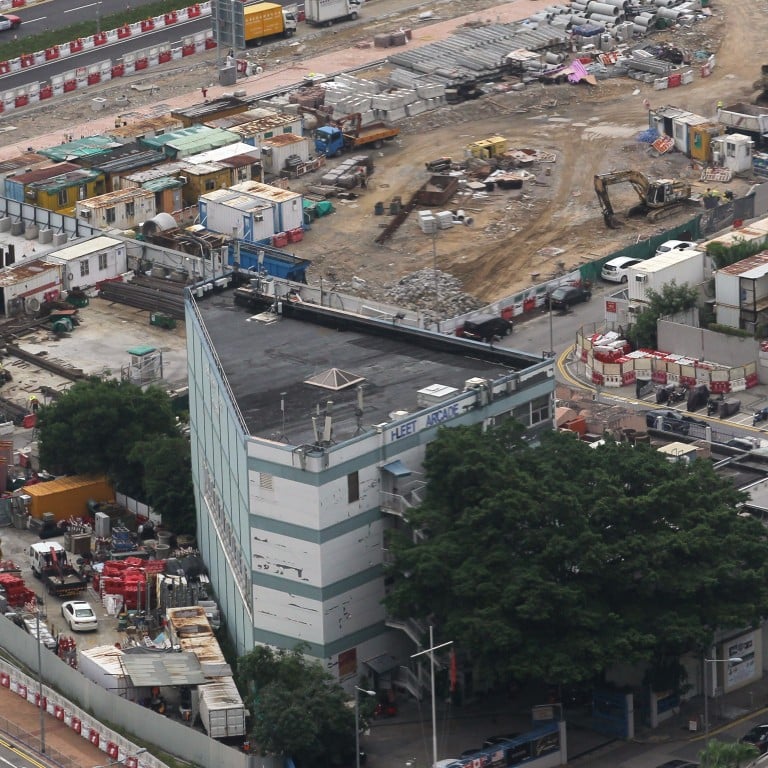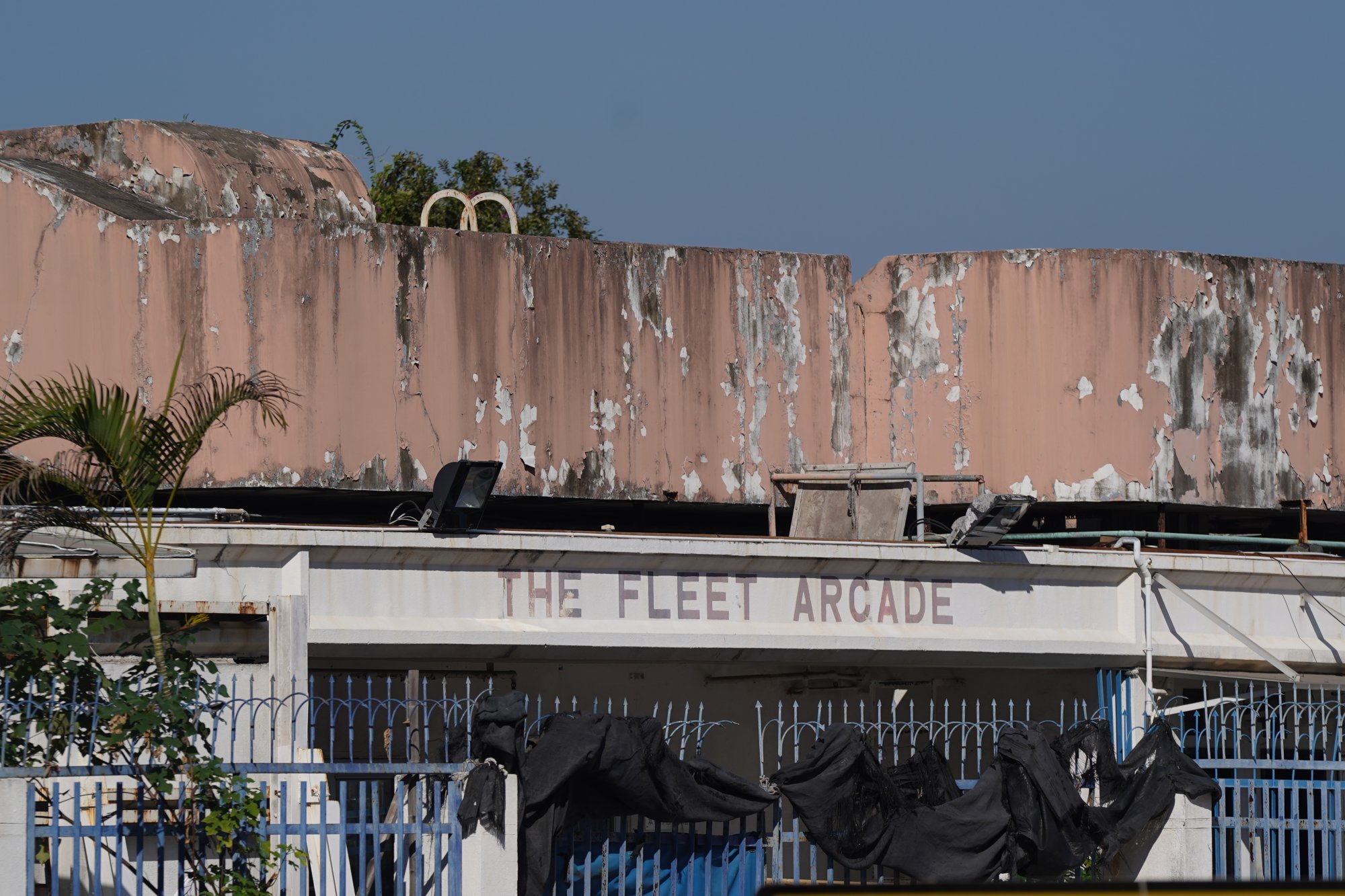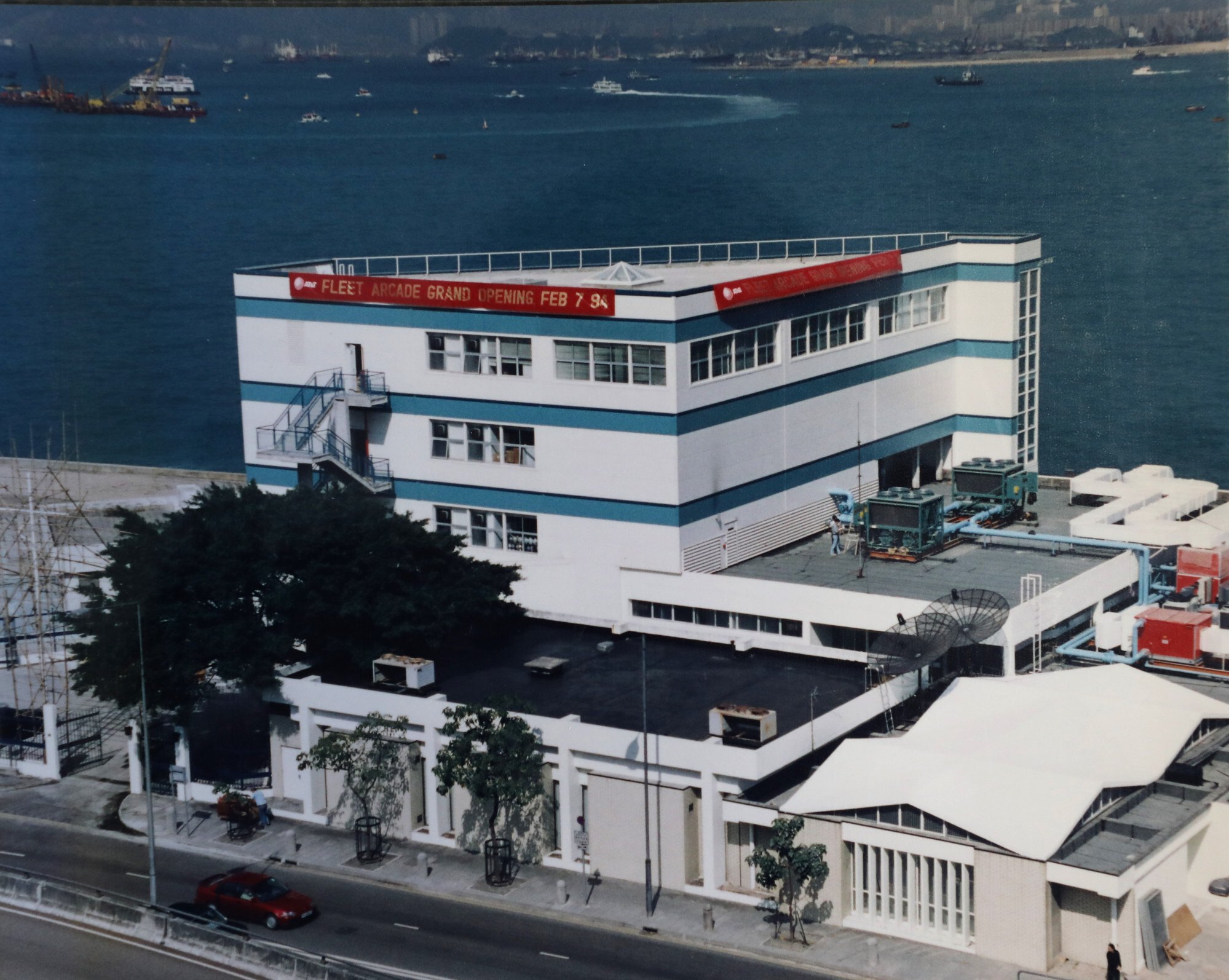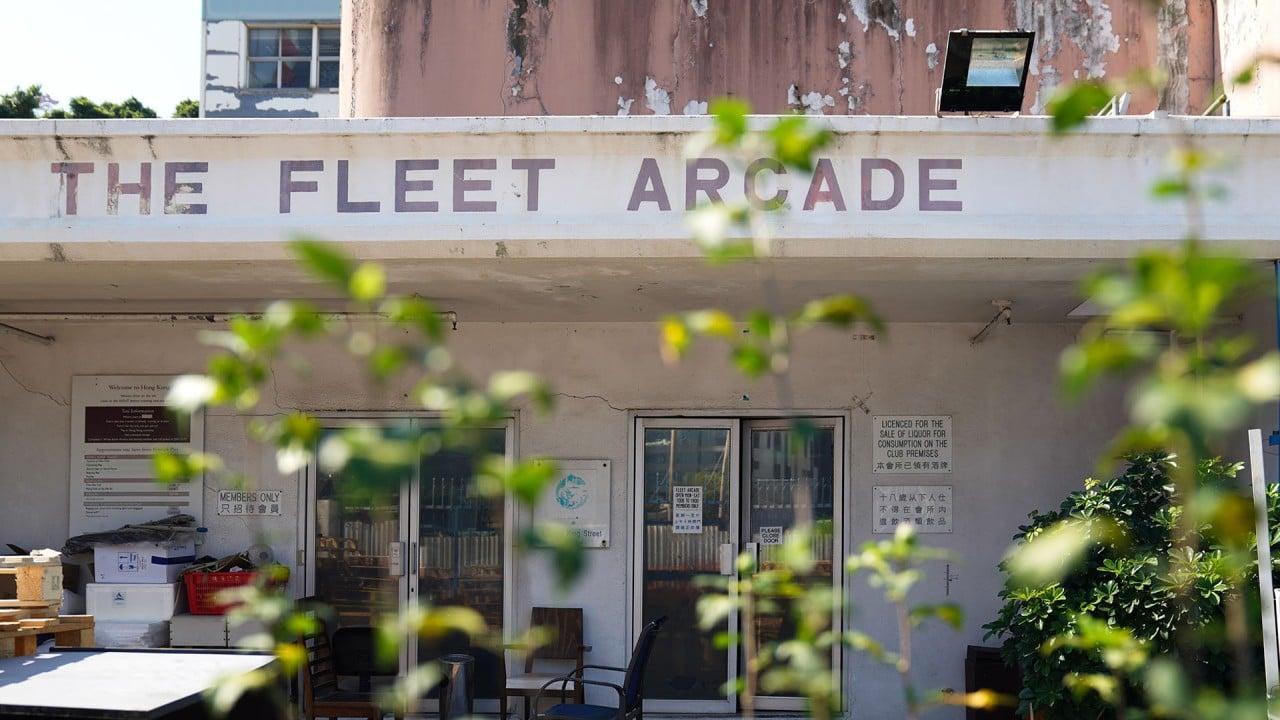
The last days of Fleet Arcade at Fenwick Pier in Hong Kong, hang-out of foreign navy crews for decades and a dining destination for residents
- For over 20 years it welcomed visiting navy personnel whose ships docked at Fenwick Pier, but since 2016 the arcade has been landlocked following reclamation
- Tailor Anthony Wong and a former US Navy officer recall its heyday, while Gia Trattoria restaurateur Gianni Caprioli looks to be busy for its final few weeks
These past few weeks Anthony Wong Man-fu has been calling his customers, reminding them to pick up their tailor-made shirts and suits at the Fleet Arcade at Fenwick Pier in Wan Chai before his shop closes on January 22.
His and a handful of other businesses there have been given notice to move out by February 3. The arcade, which serviced foreign sailors for over 20 years before land reclamation cut it off from Victoria Harbour, will close on February 11 when it is handed back to the Hong Kong government under a plan to secure more urban land for redevelopment.
Retired US Navy officer Andrew Ehlers, who visited Hong Kong many times between 1993 and 2014, has fond memories of the Fleet Arcade at Fenwick Pier, describing it as “a mini shopping mall where sailors could get suits and jewellery at good prices”. In 1997, he worked at the pier in the Ship Support Office, which helped get supplies, from food to fuel, onto ships.

“Sometime in 1997, my boss, a US Navy lieutenant commander, invited me to lunch at an Indian restaurant, and the owner introduced himself as Bob. Over the next two hours Bob ordered plates of food and explained their origin, the spices and elements that gave them their flavour, and how each was cooked,” Ehlers said in an email.
“At one point he brought us back to the kitchen to see the tandoori ovens and show us how naan bread was made. I asked him about his family origin, and he told a great story that was not uncommon in Hong Kong – a family that came with nothing and built something special.
“To this day it’s one of the most memorable meals of my life. Our host that day was Bob Harilela, and I had no idea at the time that he was a member of one of Hong Kong’s most prominent business families.”
Since reclamation started in the area in 2011, the Fleet Arcade has become landlocked and dilapidated, its paint peeling off. Many shop spaces are already vacant.
Wong’s tailor’s shop, Fu Shing and Sons, has been in the arcade since it opened in 1994. He is a third-generation tailor – his grandfather was in the trade in Shanghai, and his father moved to Hong Kong to set up shop in 1949.

“It was very hard times for them because Shanghai was very prosperous back then. Hong Kong was really kind of behind in everything [in those days]. They had to start their lives all over again,” Wong recalls.
“My mom was fantastic. At that time there was no outside catering … She cooked lunch and dinner for 20, 30 people [and] for all the staff in the shop.”
When Wong, now 71, opened in the Fleet Arcade in the 1990s, United States Navy ships regularly docked at Fenwick Pier and a long queue of sailors waited to have their measurements taken for shirts and suits.
It’s not just me. Everybody was sad, even the girl who was helping me before. As we get nearer [to closing] she has been crying
“Oh man, the navy boys were lined up outside, waiting to get a suit. They wanted to get a beer too. But we weren’t allowed to sell them any liquor,” he says with a smile.
“We had enough people [tailors] to turn around 30 to 40 suits in five days,” says Wong. Those sailors who were repeat customers would bring their friends, and this resulted in a healthy mail-order business.
Records of the Servicemen’s Guides Association (SGA), a Hong Kong non-profit that runs Fenwick Pier, show that from 1981 to 1997 between 37 and 99 naval ships docked annually there, each carrying hundreds of sailors. Foreign naval vessels could also dock at the China Merchant’s Wharf in Kennedy Town.

The closure of the Fleet Arcade, which Wong heard about a year ago, was to have happened last summer but was delayed until December and then put back until next month.
“It’s not just me. Everybody was sad, even the girl who was helping me before. As we get nearer [to closing] she has been crying,” says Wong, who plans to move his business to Wellington Street in Central. “I had a good run here, so I will miss this place.”
Ted Algire, executive director of the SGA, which was founded in 1953 on behalf of the then British colonial government to provide a space for visiting sailors, says the organisation caters to a unique group of tourists in Hong Kong.
The 120-year-old story of Hong Kong’s iconic Star Ferry
“[They are] very young men and women, 18 to 20 years old, military sailors from all over the world, most of whom have not travelled much, so we try to provide them a positive experience in Hong Kong,” he says.
A former pilot on a US Navy aircraft carrier, Algire understands what it is like to be at sea for long periods of time, to be away from family and how that affects sailors mentally.
“People don’t realise some of the hardships that these young sailors have to endure,” he says. “For most of them, they’ve never been away from home until they’ve gone on these deployments for up to six to eight months.

“Sailors first arrived here before the internet and before all the video chat, so we had banks and banks of phones for people to call home. Then with the advent of Wi-fi and video chatting – just seeing them here, laughing, chatting with their families, and relaxing, are some of my fondest memories.”
For years, the Fleet Arcade was known for its McDonald’s – the only branch in the city that served beer and pizza – as well as for shops that sold foreign magazines at low prices and souvenirs.


According to Algire, the SGA’s first premises were on the other side of the harbour in Kowloon; in the 1960s it moved to Gloucester Road – still on the shoreline then – and afterwards to Fenwick Pier, which opened at its current location in 1970.
Until the return of Hong Kong to Chinese sovereignty in 1997, the SGA only serviced American sailors, but thereafter catered to the crews of all visiting foreign naval vessels, including those from Canada, Australia, New Zealand, Malaysia, Singapore, Peru, Thailand and the Netherlands.

The SGA had plans to renovate the Fleet Arcade, which were approved by the Town Planning Board in 2016, but in November 2019 Algire was informed by the government that the SGA had to move out of the premises to make way for a fire station.
He notes that the 2019 anti-government protests and subsequent Covid-19 pandemic has meant no foreign naval vessels have docked in Hong Kong for more than two years – the last to do so were two US Navy vessels in 2019.

“The SGA is going to continue. We’ll move into a small office and the organisation is looking at the future – how do we do our core mission, which is to take care of these unique tourists that visit Hong Kong, and how do we relate to the people of Hong Kong a bit more,” says Algire.
We didn’t know that every year was a gift, because we thought that in 2016 the rent would end

“We reopened for one year, then two years. We didn’t know that every year was a gift, because we thought that in 2016 the rent would end. Then every year we signed only a one-year agreement with six months’ notice, but we knew we would be kicked out [eventually].”
Despite the land reclamation and constant road construction in the area, Caprioli managed to make Gia Trattoria popular, along with his Mercato Gourmet on the ground floor that has expanded to several locations, including one in The Peninsula Hong Kong hotel’s basement shopping arcade.
But now that the end date is finally here, Caprioli admits he may shed a few tears whenever he passes by the location.


